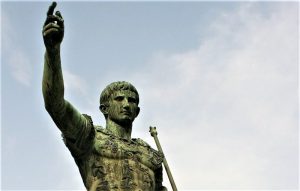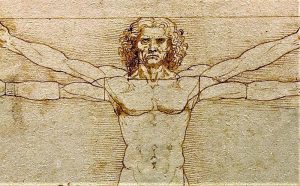Feudalism
In medieval Europe, between the ninth and twelfth centuries, there was a model of government based on land ownership and administration by the lords of the nobility of the time. This system is known as feudalism. The name feudalism comes from the Latin word medieval feudum or faudo, which refers to the contract that had the lords of the land - known as feudal lords - for the dominion of the land and the servants found there. The feudal lords had to pay tribute to their kingdoms by generating wealth for their kings or emperors. With the passing of time, the crusades, the barbarian invasions and the land deterioration, this system was diminishing, generating great peasant revolts and ending with the birth of capitalism and a new social class called the bourgeoisie.
What is feudalism?
Feudalism is a political, social and economic system of organization that manifested itself in Western Europe from the end of the 9th to the 12th century. It placed the dominion of the royal territories and their vassals in the hands of the feudal lords to protect the monarchy's lands from invasion and to pay tribute to the kings through the wealth produced in the kingdom's lands. The origin of the feudal model comes from the Roman Empire, when the colonist-patronage regime existed, in which the members of the nobility kept their lands and their slaves in order to generate wealth and tributes for their kings. These riches came from agriculture and livestock in their feudal territories.
Characteristics of feudalism
Among the most representative characteristics of feudalism we can cite the following:
- The king or emperor was the highest authority.
- Society was divided into three strata. The nobles, the clergy and the servants. There was no class mobility, whoever was born a servant died a servant.
- In the feudal period in Europe, many castles and forts were built to protect the nobility from external enemy invaders from other territories.
- Wealth came from agriculture and livestock.
- There was no trade, no industry.
- The servants paid tribute in species to the nobles for the right to live on their lands or for clergy maintenance.
- Political, legal, and economic powers were administered only by feudal lords and clergy.
- Economic growth took place through wars, since by winning them, they conquered territories that could be exploited to produce more food or goods for the kingdom.
- The figure of the knight appears to serve the king and conquer territories for the Kingdom he serves. The knight is also linked to the Catholic faith and its promotion.
- The power of the Catholic Church was superior to that of the monarchy, since it came from God and therefore was unquestionable. Only the high officials of the Church could clothe the kings and with a crown.
History
Origin
Feudalism originated in late Antiquity with the transition from the slave mode of production to the feudal mode of production from the 3rd century onwards. This economic-social formation was strengthened with the dissolution of the Roman Empire in the 5th century and the construction of the Germanic kingdoms and the Carolingian Empire between the 8th and 9th centuries.
Feudalism in the Middle Ages
Feudalism in Europe marked the passage from the end of the Roman Empire to a new form of monarchical government based on land rule and a new era known as the Middle Ages.
Feudalism began in Western Europe as a military approach in which feudal lords dispensed justice, administered and protected their territories with armed force, but ended up with tracts of land in the name of a feudal lord, who ended up cultivating his lands and paying for protection for his feuds.
Feudalism spread to European countries such as Spain, France, England, Italy, Portugal, among others. Its heyday was between the 12th and 13th centuries.
Feudalism’s fall
The feudal system begins to decay for several reasons in which we can mention:
The bad living conditions of the inhabitants of the feuds (plagues, famines, wars) left the lands without vassals to work the field and the harvests were less and less due to land deterioration.
The crusades carried out as expeditions to Jerusalem to liberate the holy land of the Muslims left many territories without protection, and without a feudal lord to watch over their production.
The growth of the bourgeois class. This class developed the commerce and little by little it was taking economic power to remain out of reach of the feudal lords.
The presence of Muslim invasions in European territories.
The social structure of feudal society was made up of three social groups. These were: the warrior nobility, the clergy and the peasants.
The warrior nobility was integrated by the King and the great feudal lords who were part of the nobility. This group includes knights.
The clergy consisted of the high prelates (cardinals, archbishops, and abbots) and the monks and clergy.
The peasants’ group consisted of the serfs and villains, who were settlers of the fiefdoms who could work the lands and also practice other professions.
Feudal culture
In the Medieval era, culture was dominated and administered by religious power, only the clergy developed monasteries for the study of the liberal arts (logic, grammar, rhetoric, arithmetic, geometry, music and astronomy); it created universities in Europe and other training courses to study philosophy, literature and theology. An example of these study houses is the university of Bologna created in 1088.
The feudal culture also developed the Romanesque and Gothic architectural style that is still present in some European castles and cathedrals in countries such as France, Spain and Italy.
Causes
Feudalism originated from the Roman Empire’s fall and the barbarian invasions that generated multiple warlike conflicts for the dominion of territories originated by the Germanic, Slavic, Muslim and Viking peoples. The monarchies, in order to maintain their spaces of dominion, subdivided their lands into feuds so that, they could be protected and administered by the nobility, who had vassals and soldiers for the conservation and production of the land they occupied. This system was gradually implemented in Western Europe in the Middle Ages.
Feudalism consequences
The implementation of the feudal system resulted in the King’s central power becoming weaker and weaker in the feuds because the feudal lords made their territories mini states, where the economy was independent of the kingdom and they were the kings of their lands. In this sense, the kingdoms were gradually fragmented.
The abuse of power of the feudal lords caused many revolts among the peasants who were often mistreated or sold by their masters. The Church wanted to stop the nobility’s abuse, but little by little it ended up making the same mistakes.
These two factors, added to the crusades and the barbarian invasions generated the fall of feudalism.
Importance
The feudal system was of great importance in its time for protecting many kingdoms in Europe. At the beginning, its foundations were linked to the loyalty, honor and heroism of the feudal lords to their King, and to the values of the Catholic religion, but unfortunately, these ideals were decaying with this government type. This also generated a kind of social stratification linked to military power and the possession of land that years later would be corrupted by abuse of power, invasions and crusades.
Examples
Examples of feudalism in Europe are presented below:
Feudalism in France
Feudalism settled in France in 700 A.D., after the fall of the Roman Empire, becoming the classic form of medieval servitude.
The French feudalism strengthened the monarchy and the catholic church in the territory, developing a unitary and centralist absolutism that had to fight with many peasant revolts and invaders that came from other lands. In spite of all the social confrontations, the French territory expanded its territories to the east and managed to make alliances with other countries on a commercial level.
The feudal regime saw its end in the French revolution of 1789.
Feudalism in Spain
Feudalism was born in Spain when the Roman Empire fell on Spanish soil. As in France, Spain was a country that possessed many kingdoms that were gradually consolidated in the nation that it is today. However, feudalism occupied its role in the Middle Ages to protect the monarchies and to strengthen the power of the church in state decisions.
The French revolution is taken as a reference of change in Spain to leave the present feudal system and give way to a new system of government focused on the capitalist system where the bourgeoisie played an important role in the economy of the country. Despite having changed the feudal system in Spain, this nation preserved its Kings and members of the monarchy as part of its cultural heritage and as heads of state.
Feudalism in Hungary
Hungary was founded in the year 1000 by its King St. Stephen I and had close trade relations with other European countries in the Middle Ages.
Hungary had a large kingdom, covering part of the territories of Croatia, Slovenia, Transylvania, and Slovakia. It also had economic stability and strong military power, making this kingdom one of the strongest in Europe at the time.
The king offered the land and could transfer it to another feudal lord, if he deemed it necessary, as a reward or punishment for his servants. Unlike other European countries such as France, England or Germany there was no lord below the king who granted the land. The king of Hungary treated the nobles as members of his family and had a very close relationship with them that allowed him to strengthen the bonds of loyalty with their nobles.
The confrontations that took place in the Hungarian feudal era were not between feudal lords, but between relatives of the royalty who fought to obtain the absolute power of the kingdom. Thus, in 1300, when the last nobleman of the Royal House, Andrés III of Hungary, died, the nobility took advantage of the weakening of the kingdom to create small kingdoms, but did not manage to conform to a feudal state, leaving aside this form of government to adapt to another focused on capitalism.
How to cite this article?
Briceño V., Gabriela. (2019). Feudalism. Recovered on 24 February, 2024, de Euston96: https://www.euston96.com/en/feudalism/










